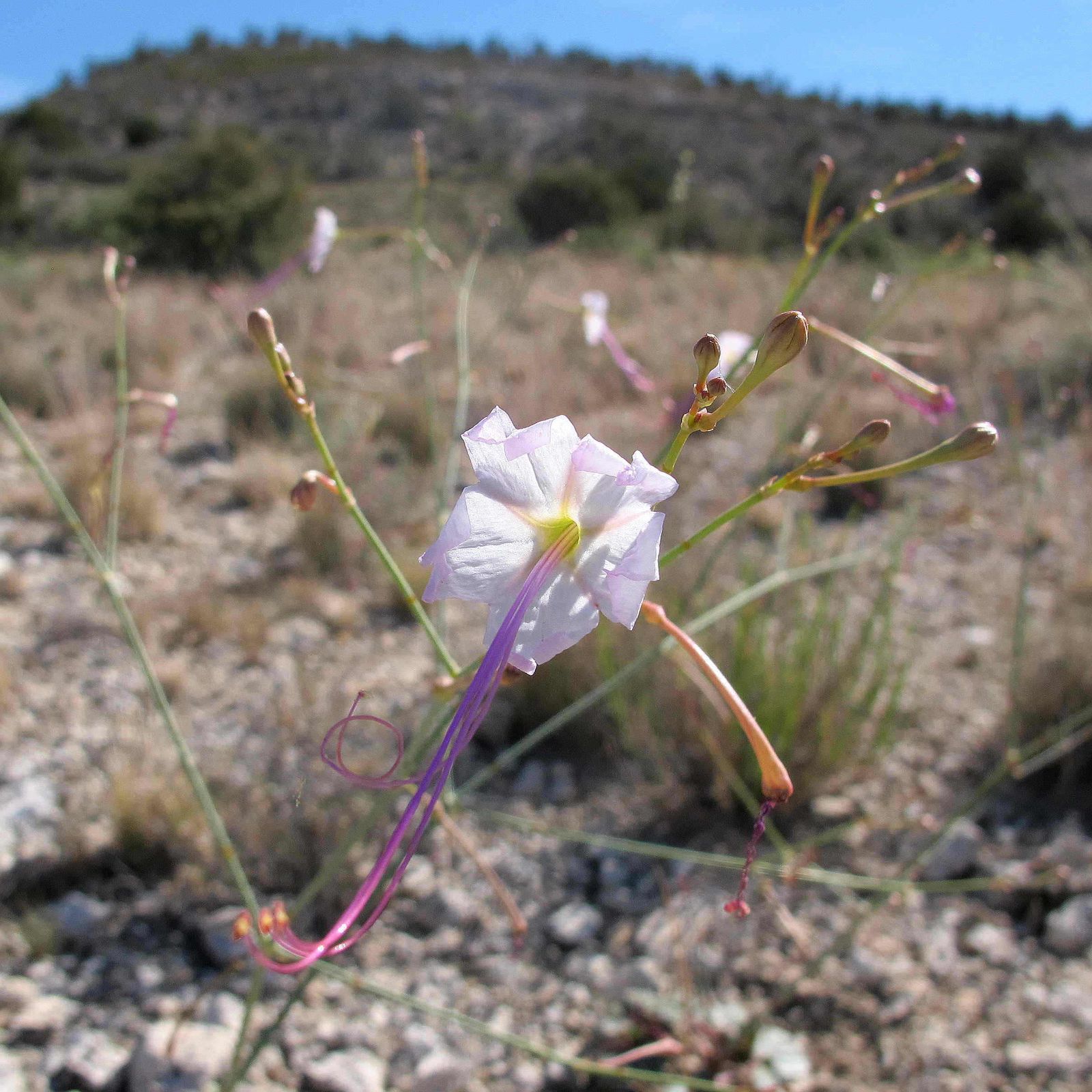Anulocaulis
|
Family: Nyctaginaceae |
Herbs, usually short- to long-lived perennial, occasionally annual, stout, pubescent to glabrate, from slender and spongy or massive and woody taproots. Stems erect to ascending, unarmed, with glutinous bands on internodes. Leaves in pairs, ± equal in size in each pair, long petiolate, thick and fleshy, base ± symmetric. Inflorescences terminal, pedunculate, widely paniculate, flowers ultimately borne singly, in subumbellate clusters, or in glomerules; bracts persistent, not accrescent, 1-2 at base of pedicel, distinct, minute, lanceolate, dark, opaque. Flowers bisexual, chasmogamous; perianth radially symmetric or slightly bilaterally symmetric, tubular-funnelform, constricted beyond ovary, tube abruptly flared to 5-lobed limb; stamens 3 or 5, exserted; styles exserted beyond stamens; stigmas peltate. Fruits biturbinate or fusiform, constricted beyond base, apex umbonate, stiffly coriaceous, smooth or irregularly wrinkled, glabrous, with 10 narrow ribs and an equatorial flange or wing, or 5-angulate with a low rib between angles and no equatorial flange, or fusiform and smooth or with 10 low, linear ribs and sometimes with incomplete equatorial low, linear ridge, eglandular or glandular-puberulent. Species of Anulocaulis have been considered to belong in a broadly circumscribed Boerhavia, the western A. annulatus most recently so in regional treatments. F. R. Fosberg (1978) argued for an inclusive Boerhavia, and suggested that workers emphasizing differences might wish to recognize segregate genera, as is done in this work. Flowers of Anulocaulis, particularly in those species with large ones, are slightly bilaterally symmetric because of curvature of the tube, variation in the amount of curvature of the limb, and the downward sweep of the stamens and the style.
|

